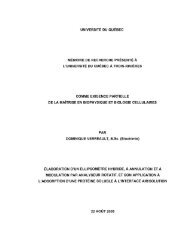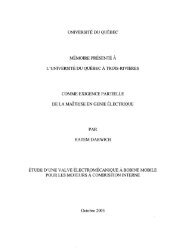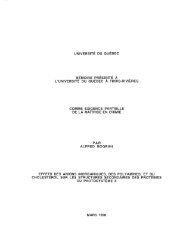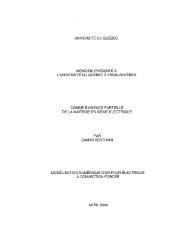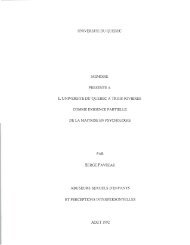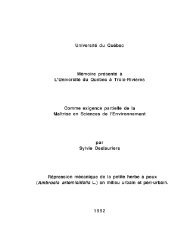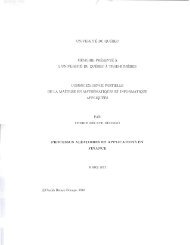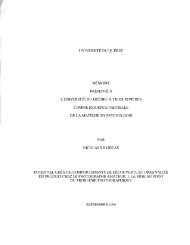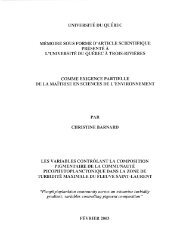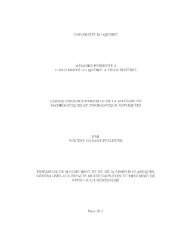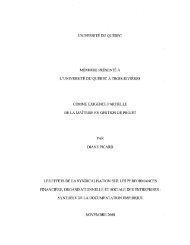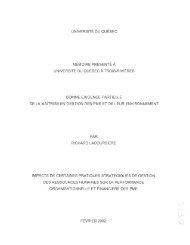Biomanipulation du meunier noir (Catostomus commersoni)
Biomanipulation du meunier noir (Catostomus commersoni)
Biomanipulation du meunier noir (Catostomus commersoni)
Create successful ePaper yourself
Turn your PDF publications into a flip-book with our unique Google optimized e-Paper software.
eached maturity, the method used could have caused the observed variations. Those<br />
observed <strong>du</strong>ring white sucker mass removal in lakes Claudette and Des Îles could be<br />
attributed to an increase in recruitment. An increase in recruitment in<strong>du</strong>ces an increase<br />
in the proportion of smaller mature indivi<strong>du</strong>als, which is responsible for a lower mean<br />
length at maturity. After the end of white sucker mass removal, the increase in the mean<br />
length at maturity of brook trout in Lake Claudette could be explained by the increase in<br />
growth of older indivi<strong>du</strong>als.<br />
3.5.5 Brook trout repro<strong>du</strong>ctive investment<br />
During white sucker mass removal, brook trout females pro<strong>du</strong>ced a larger number<br />
of eggs but of smaller size compared to the period before the biomanipulation and the<br />
reverse occurred after the cessation of white sucker mass removal (brook trout females<br />
pro<strong>du</strong>ced a smaller number of eggs but of larger size). Because larger juveniles hatch<br />
from larger eggs, and larger juveniles have a better chance of survival in early life than<br />
do smaller juveniles (Hutchings 1991) these observations suggest that for brook trout,<br />
there is a selection for the pro<strong>du</strong>ction of smaller numbers of eggs but of larger size with<br />
increases in inter-specific competition. The effects of food availability and egg size on<br />
juvenile brook trout survival results in different optimal egg sizes for environments that<br />
differ in food abundance (Hutchings 1991). In a study on Atlantic salmon, it was<br />
suggested that females exhibited phenotypic plasticity in response to the likely feeding<br />
opportunities to be encountered by their offspring (Jons son et al. 1996). Consequently,<br />
in environments where food is readily available, egg size tends to be smaller while the<br />
reverse occurs in environments where food is less abundant. In addition to food supply,<br />
many studies have reported an influence of growth rate on the fecundity of fish. The<br />
pro<strong>du</strong>ction of more offspring was generally found to be advantageous where, <strong>du</strong>e to<br />
higher food availability, juvenile growth rates were higher, whereas larger offspring<br />
were found to be favoured where growth rates were lower (Bagenal 1969; Ware 1975;<br />
Thorpe et al. 1984; Jonsson et al. 1996; Lobon-Cervia et al. 1997). These results suggest<br />
that for brook trout, the changes in intra- and interspecific competition through the white<br />
73



